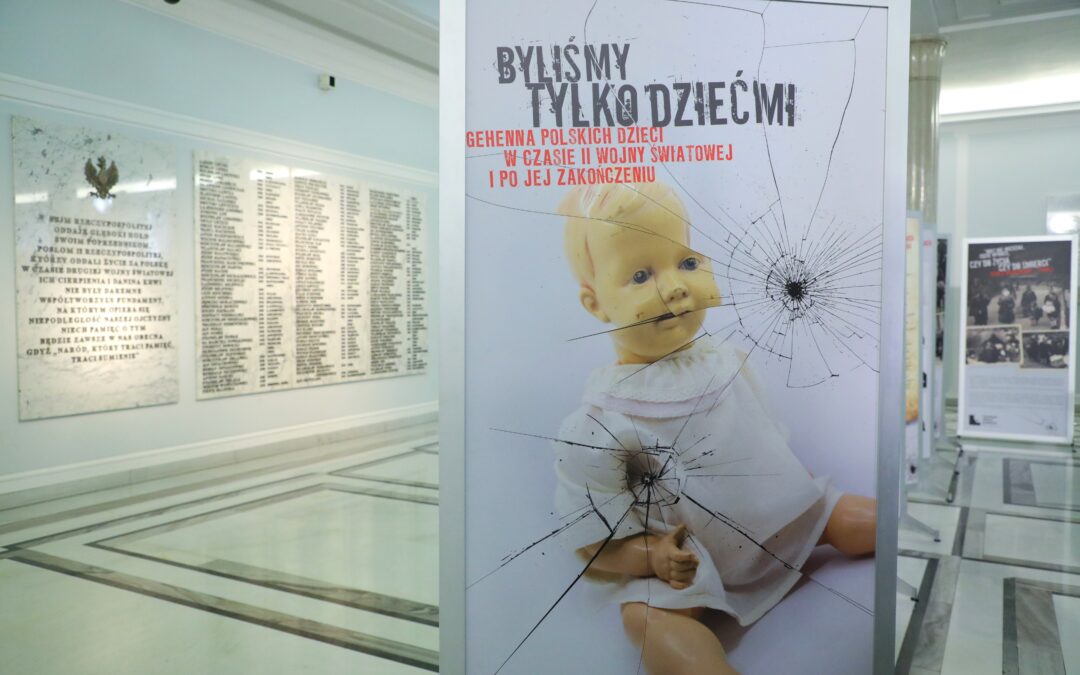An exhibition commemorating Polish children who died under the Nazi German and Soviet occupations has been opened in Poland’s parliament. Culture minister Piotr Gliński wants it to also be showcased in European institutions.
“During World War Two, approximately two million Polish children were murdered by the German and Soviet occupiers,” said Gliński, unveiling the exhibition yesterday.”[A further] 200,000 were kidnapped for ‘Germanisation’ purposes and only 20% returned to Poland.”
“These are numbers that we should always remember and repeat,” added the minister, who declared that the exhibition “should also be shown in the European Parliament and the Council of Europe in Strasbourg”.
📌Wernisaż wystawy „Byliśmy tylko dziećmi. Gehenna polskich dzieci w czasie II wojny światowej i po jej zakończeniu". Relacja
🔹W sejmowym holu głównym odbył się wernisaż wystawy pt. „Byliśmy tylko dziećmi. Gehenna polskich dzieci w czasie II wojny światowej i po jej… pic.twitter.com/32vbOWRk1P
— Sejm RP🇵🇱 (@KancelariaSejmu) August 30, 2023
The exhibition, with texts available to read in Polish, English, German and Ukrainian, is entitled We Were Only Children: Gehenna of Polish Children During and After World War Two. “Gehenna” is a biblical term referring to a place of misery.
It was organised by Ireneusz Piotr Maj, the director of the Museum of Polish Children: Victims of Totalitarianism, which opened in 2021 in Łódź in central Poland.
That city was where, during the war, Nazi Germany established a concentration camp for Polish children, known as Kinder-KZ Litzmannstadt. In December 2022, the museum purchased two buildings located on the site of the former camp, where it plans to install a permanent exhibition.
Germany has outlined plans for a new centre in Berlin commemorating the victims of German atrocities in Poland during WWII.
"We Germans, and that includes me, still have a lot to learn," says Claudia Roth, the federal commissioner for culture and media https://t.co/HeuP4zGozV
— Notes from Poland 🇵🇱 (@notesfrompoland) August 30, 2023
Gliński noted that yesterday’s opening of the exhibition comes ahead of the first National Day of Polish Children of War, a recently established public holiday in Poland that will be held on 10 September.
The Polish government’s role is “to institutionalise the memory” of Polish victims “by establishing a national holiday and building an institution of remembrance…to preserve memory, as a tribute towards the victims and commitment to the present, and educate future generations”, said the minister.
Yesterday’s opening also heard a statement from the speaker of parliament, Elżbieta Witek, who like Gliński belongs to the ruling national-conservative Law and Justice (PiS) party.
Polish children were “executed without any mercy, subjected to brutal torture and experiences in concentration camps, and forced to work beyond their strength”, wrote Witek. “We need to keep reminding ourselves of this painful truth so that it sinks deep into people’s consciousness and a period of hatred never happens again.”
This 10 September Poland will celebrate the first National Day of Polish Children of War.
It will be observed “in tribute to the Polish children of war, who, despite the trauma they experienced (…), were able to lift our common homeland from the ashes”https://t.co/qA21g3CKfT
— Notes from Poland 🇵🇱 (@notesfrompoland) August 4, 2023

Notes from Poland is run by a small editorial team and published by an independent, non-profit foundation that is funded through donations from our readers. We cannot do what we do without your support.
Main image credit: D.Matloch/MKiDN (under CC BY-NC-ND 3.0 PL)

Anna Hackett is an assistant editor at Notes from Poland. She is a recent graduate of European Studies from Trinity College Dublin and has had previous journalistic experience with the Irish Independent News & Media group.



















